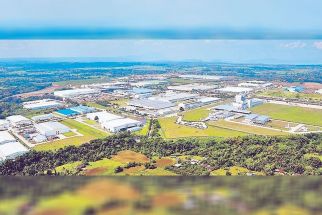GM corn production now a multi-billion-peso industry
LOS BAÑOS, Laguna , Philippines – Genetically modified (GM) corn production in the Philippines has become a multi-billion-peso venture.
In 2008 alone, the net national impact of biotechnology maize on farm income was estimated at $49 million (about P2.25 billion).
From 2003, when the government approved the commercial production of biotech corn in the country, up to 2008, the farm level economic benefit of planting GM maize is estimated to have reached $88 million (P4 billion), reported the International Service for the Acquisition of Agri-biotech Applications (ISAAA).
New York (USA)-based ISAAA is a not-for-profit organization with an International network of centers designed to contribute to the alleviation of hunger and poverty by sharing knowledge and crop biotechnology applications. The network includes the Southeast Asian center based in Los Baños.
Dr. Clive James, ISAAA founder and current board chairman, reported the significant strides of biotech crops at a recent seminar billed “Global Overview of Biotech/GM Crops 2009: Current Status, Impact, and Future Prospects” held at the Dusit Thani Manila Hotel in Makati City.
Other seminar speakers were Dr. Gelia T. Castillo, a National Scientist; Dr. Emil Q. Javier, former University of the Philippines System president, now president of the National Academy of Science and Technology; Dr. Randy Hautea, ISAAA global coordinator; Dr. Rhodora Aldemita, also of ISAAA; and Isabela farmer Joseph Bonemerito, who gave a testimonial on his success as a Bt corn farmer.
Bt stands for Bacillus thuringiensis, a bacterium that naturally occurs in soil.
Through biotechnology (genetic engineering) technique, a specific gene of Bt has been introduced or inserted in a corn variety. The Bt corn produces its natural pesticide against Asian corn borer, one of the most destructive pests attacking corn in the Philippines and in other Asian countries.
In his 290-page annual report, Dr. James said: “The benefits of biotech maize to Filipino farmers’ livelihood, income, the environment, and health have been well-studied and documented. Farms planting Bt maize in the Northern Philippines have significantly higher populations of beneficial insects such as flower bugs, beetles, and spiders than those planted to conventional hybrid maize.”
Dr. James also cited socioeconomic studies done by Filipino researchers citing the higher incomes derived from planting GM corn over other non-transgenic varieties.
At best, Bt corn has considerably changed for the better the complexion of vast farm areas in the countryside.
Consider Barangay Anao, Mexico, Pampanga.
Anao was once part of a hacienda placed under land reform in the 1970s.
It turned into a “no man’s land” in the early 1990s when volcanic ashes mantled it following the eruption of Mt. Pinatubo.
In recent years, it turned verdant and productive again – thanks to biotech corn, which almost all the farmers in the barangay planted.
The once sleepy hamlet is now a picture of progress, with many of the families having sent their children to college out of their high income from their Bt corn harvest, as gathered by this writer a few years ago.
The success story of biotech corn in the Philippines can also best be exemplified by Sara town in northern Iloilo.
Sara’s once barren hilly grasslands are now lash and productive corn fields planted to GM maize.
When the villagers began planting the “wonder crop” in 2005 through the initiative of the Northern Iloilo Cooperative Corn Producers Association Inc. (NICPAI), only 800 ha were covered.
In just three years, the area, covered by biotech corn soared to 9,300 ha, with the farmers earning at least P40,000 annually, reported NICPAI farmer-leader Nelson Sonza. Farm sizes vary from two to five ha per family.
NICPAI subsequently shot to international prominence when it won PLEDGE, the highest global award given by multinational Monsanto to outstanding projects in agriculture. NICPA’s success story dubbed “From Grassland to Corn Land” won a cash prize of $20,000.
Biotech corn has also catapulted several Filipino farmers to global limelight.
Example is Rosalie Ellasus of San Jacinto, Pangasinan, a petite lady who once worked as a caregiver abroad but eventually became one of the most successful biotech corn growers in the country.
In 2007, Ellasus, now a municipal councilor in her town, was chosen as the first recipient of the Kleckner Trade and Technology Advancement Award (USA) given for “exemplary leadership, vision, and resolve in advancing the rights of farmers to choose the technology and tools that will improve the quality, quantity, and availability of agricultural products around the world.”
Ellasus, a former president of the Philippine Federation of Maize (PhilMaize) farmers, has also been invited in several international forums to talk on her experiences as biotech corn farmer.
Another is Edwin Paraluman of Cotabato, who has been an active advocate of biotech crops here and abroad. He is coordinator of the Asian Farmers Regional Network.
Summing up, ISAAA projected: “Future prospects look encouraging, with several ‘home grown’ biotech products likely to be commercialized in the next three years, including Bt eggplant, biotech papaya, and Golden Rice.”
- Latest
- Trending




























